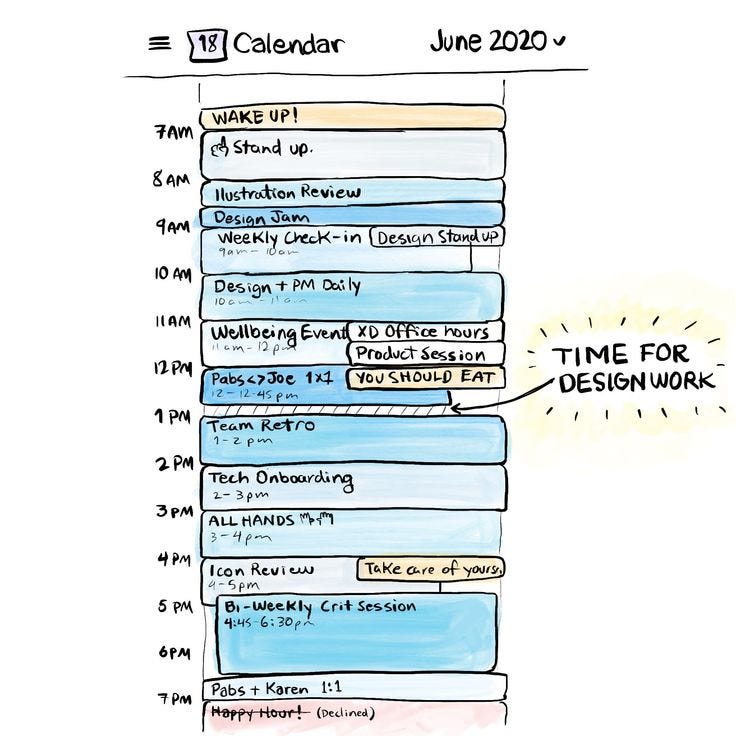

Why over-collaboration can kill designer creativity and how to avoid that
source link: https://uxplanet.org/why-over-collaboration-can-kill-designer-creativity-and-how-to-avoid-that-f1cb8465c85
Go to the source link to view the article. You can view the picture content, updated content and better typesetting reading experience. If the link is broken, please click the button below to view the snapshot at that time.

Image by Unsplash
Why over-collaboration can kill designer creativity and how to avoid that
Collaboration is an integral part of the product design process. It’s impossible to create good design while working in a silo. Most of the time, we design and develop products together with others, and the better we collaborate with our peers, the better results we can achieve. However, by following a good intention to create effective collaboration, we can easily face a situation of over-collaboration. Over-collaboration is a bad thing because it hurts a designer’s creativity. It can easily lead to burnout and declines in mental well-being.
This article discusses the roots of the problem of over-collaboration and ways to avoid that.
Why over-collaboration can be a bad thing
When too much collaboration happens all the time, designers don’t have empty spaces where they can think alone in silence. It is known that brainstorming meetings work best for discussing ideas that people have prior to the meeting. It’s not very often that new ideas are born during brainstorming sessions. When designers don’t have time to think alone, they cannot generate good ideas.

Designer’s calendar. Image by Pablo Stanley
Plus, people typically hear the “loudest voice in the room” during brainstorming sessions. Some people use brainstorming sessions as an opportunity to sell their ideas and do it actively, sometimes even aggressively. Designers who participate in such sessions can only react to ideas proposed by other people. They start to discuss ideas suggested by other people rather than suggest their own ideas. As a result, the team spent this time together discussing average solutions instead of going with creative ideas.
Five ideas on how to avoid over-collaboration
There are many things companies can do at an organizational level to prevent over-collaboration. Here are just a few ideas:
1. Track the time designers spend on collaboration
Check the team calendar and see how many group sessions you have during the work week. Try to identify ways to reduce redundant meeting time. If you can avoid having a meeting and replace it safely with email, you should do it.
Every project is different, and it’s impossible to suggest a precise number of hours the team should dedicate to collaboration. But as a rule of thumb, you should aim for 80% of the time devoted to designing and 20% to collaboration.
2. Evaluate every brainstorming session
If you notice that a brainstorming session doesn’t provide a good outcome, you should reduce the frequency of sessions to allow people to better prepare for the sessions.
3. Allow designers to take more control over their workloads
A sense of control improves human feelings of well-being. Don’t push designers to follow a specific routine. Instead, allow them to follow their personal rhythm. For example, a designer might want a two-hour disturb-free frame during the work day where they don’t want to communicate with anyone and focus primarily on their work.
4. Let designers take a break
Designers tend to create their own collaborative overload problems by participating in unnecessary activities. “Always on” culture motivates designers to jump into collaborative work too quickly.
- Identify triggers that motivate designers to say “yes” to collaboration requests. Typically, those are reputation triggers, such as a desire to help others to be seen as a good colleague.
- Beat the fear of missing out (FOMO) that often forces creatives to jump into any new activity that sounds promising.
- Educate designers on practices to reduce overload.
5. Reduce the number of daily interruptions
Over-collaboration is not just a problem of time spent on meetings; it’s a product of how people organize our work. Interruption is a massive problem in many work collectives. Interruptions decrease focus time because they break your work activity into a series of individual moments.
It takes 23 minutes on average for a person to get back on track after facing an interruption. Of course, it is possible to practice techniques that allow people to get better at adjusting to interruptions, but the point is — the more interruptions we have during the day, the less productive we become. Plus, more interruptions lead to a higher level of stress.
Recommend
About Joyk
Aggregate valuable and interesting links.
Joyk means Joy of geeK